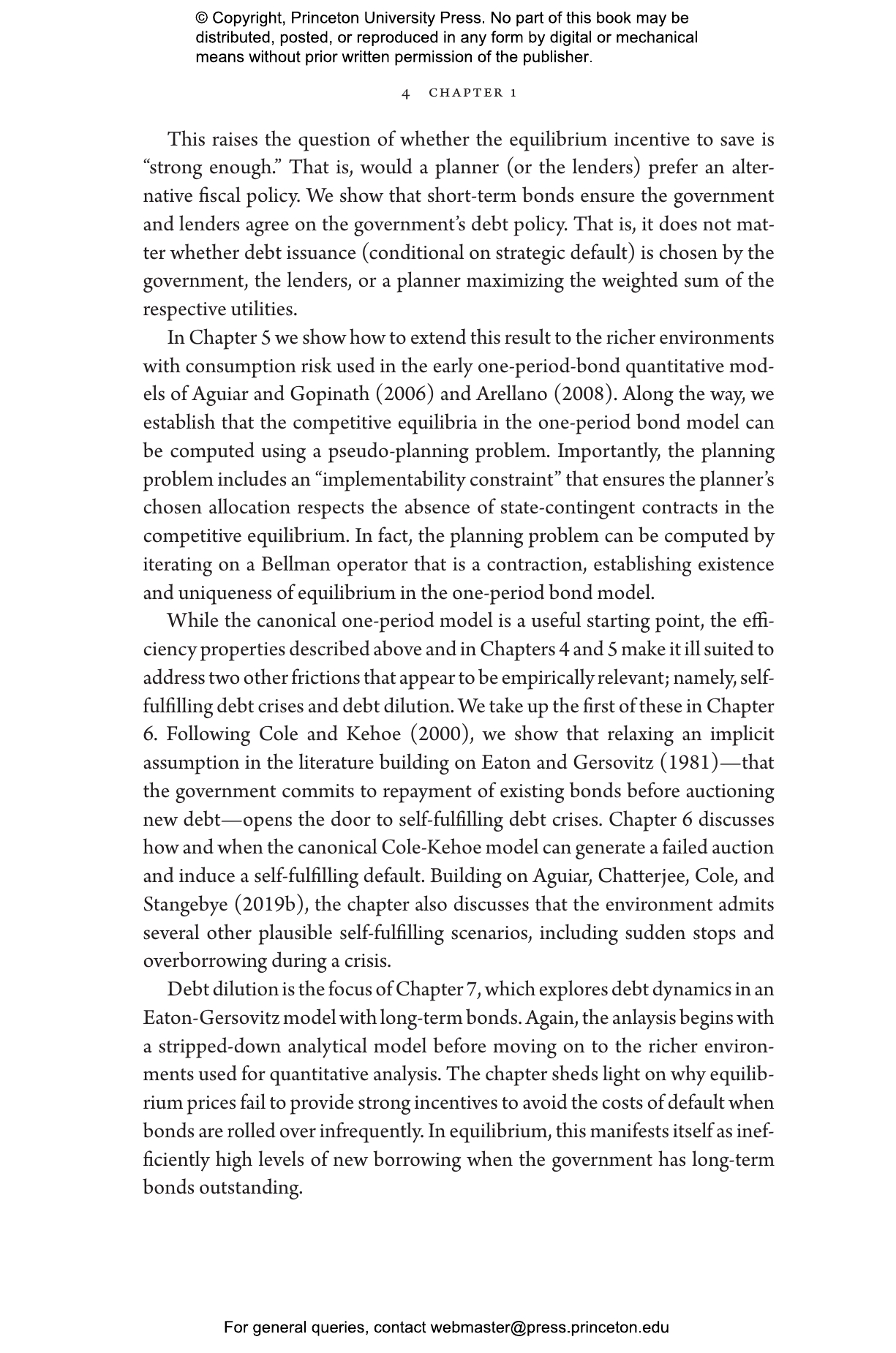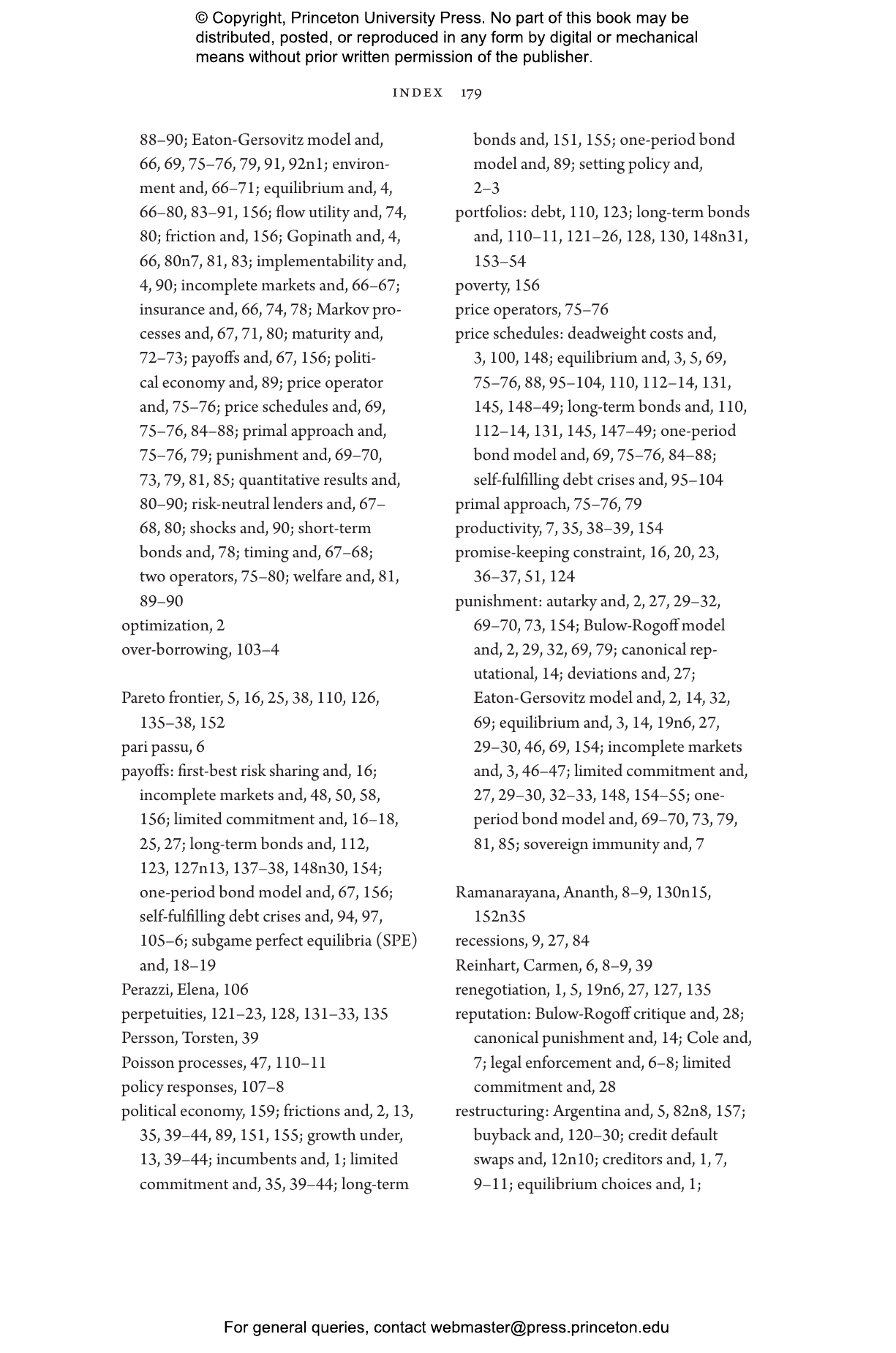Fiscal crises and sovereign default repeatedly threaten the stability and growth of economies around the world. Mark Aguiar and Manuel Amador provide a unified and tractable theoretical framework that elucidates the key economics behind sovereign debt markets, shedding light on the frictions and inefficiencies that prevent the smooth functioning of these markets, and proposing sensible approaches to sovereign debt management.
The Economics of Sovereign Debt and Default looks at the core friction unique to sovereign debt—the lack of strong legal enforcement—and goes on to examine additional frictions such as deadweight costs of default, vulnerability to runs, the incentive to “dilute” existing creditors, and sovereign debt’s distortion of investment and growth. The book uses the tractable framework to isolate how each additional friction affects the equilibrium outcome, and illustrates its counterpart using state-of-the-art computational modeling. The novel approach presented here contrasts the outcome of a constrained efficient allocation—one chosen to maximize the joint surplus of creditors and government—with the competitive equilibrium outcome. This allows for a clear analysis of the extent to which equilibrium prices efficiently guide the government’s debt and default decisions, and of what drives divergences with the efficient outcome.
Providing an integrated approach to sovereign debt and default, this incisive and authoritative book is an ideal resource for researchers and graduate students interested in this important topic.
Mark Aguiar is the Walker Professor of Economics and International Finance at Princeton University. Website markaguiar.com Manuel Amador is a monetary advisor at the Federal Reserve Bank of Minneapolis and professor of economics at the University of Minnesota. Website manuelamador.me
“Aguiar and Amador are by far the leading scholars on sovereign debt of our times. Their depth of knowledge and clarity of exposition make this the go-to book for anyone seeking a deeper understanding of sovereign debt. This book is for the ages.”—Gita Gopinath, Chief Economist of the International Monetary Fund
“An incredibly rich, state-of-the-art analysis of one of the most fundamental issues in international macroeconomics. Aguiar and Amador not only provide a highly accessible discussion of their seminal research but offer insights into a host of important institutional issues, setting the stage for the next generation of scholars.”—Kenneth S. Rogoff, coauthor of This Time Is Different: Eight Centuries of Financial Folly
“A masterful deployment of state-of-the-art and new dimension-reducing models that spotlight how political-economic-technological features and forces shape outcomes in sovereign debt markets. After presenting a compact and comprehensive summary of observed patterns detected in the empirical literature, Aguiar and Amador create sharp dynamic equilibrium models to rationalize them. I love how Aguiar and Amador capitalize on Bellman operators.”—Thomas J. Sargent, Nobel Laureate in Economics
“Aguiar and Amador draw on the most recent theoretical advancements to provide a unified approach to sovereign debt and default. This rigorous yet elegant book is a great tool for analysts working in policy institutions, and I anticipate that it will become part of the standard graduate curriculum in macroeconomics and international finance.”—Alessandro Dovis, University of Pennsylvania
“This book offers a comprehensive, elegant, and unified framework to understand sovereign debt markets and sovereign default, using state-of-the-art economic theory and covering a broad range of important questions. The Economics of Sovereign Debt and Default is a big step ahead.”—Christoph Trebesch, Kiel Institute for the World Economy



























